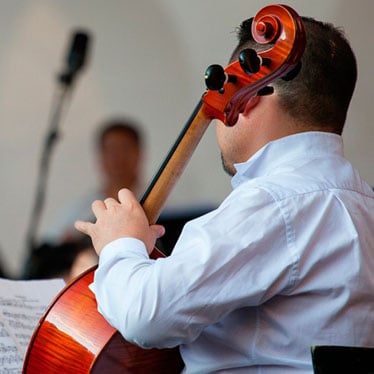Welcoming Special Needs Students to Your Orchestra

 In the U.S., the number of children who are yearly being diagnosed within the autism spectrum is increasing. Indeed, in some northeastern areas, the rate is very high, as many as 1 in 42 boys. And although the increase seems startling, it is understandable. The techniques used for detection are more specific now, and comprehension concerning the risk factors and characteristics are becoming better understood, especially for those children with high-functioning autism and other learning disabilities.
In the U.S., the number of children who are yearly being diagnosed within the autism spectrum is increasing. Indeed, in some northeastern areas, the rate is very high, as many as 1 in 42 boys. And although the increase seems startling, it is understandable. The techniques used for detection are more specific now, and comprehension concerning the risk factors and characteristics are becoming better understood, especially for those children with high-functioning autism and other learning disabilities.
However, fulfilling the moral and legal responsibility to create a comprehensive learning environment that meets the needs of these children can be difficult. Special needs students often face challenges due to their strong sensitivities. Things like loud noises (class bells) and crowded areas can be overwhelming, but studies have repeatedly shown that many children diagnosed with special needs often flourish in music instruction. Therefore, developing ways to make your orchestra more welcoming to these students can not only aid your school district, it can also create a support structure that helps kids cope with their daily struggle.
Education is the top priority for every child, and music training is a big part of that. These tips can help you, as an educator, build an orchestra that embraces special needs students and creates a learning atmosphere that edifies all of your pupils.
Accommodation
Helping kids with learning disabilities reach their full potential is very rewarding, but one key to remember is accommodation. These children aren’t lacking in the ability to learn, indeed, they often display increased capacity in that aspect, but the methods required to convey the instruction are different than traditional strategies. You can make your orchestra a welcome place for special needs students by accommodating—using a device, materials, or a support process that will enable students to accomplish tasks efficiently.
According to experts, children with learning disabilities should employ as many sensory signals as possible. Hands-on activities help focus the attention of special needs students, and playing a musical instrument is by definition a hands-on activity. However, as a teacher you need to include both visual and auditory forms of instruction since there are times in class when different groups must wait and listen. Accommodating your teaching style to include special needs students also includes:
- Giving immediate feedback and specific praise. Rather than simply saying “Well done!” tailor your feedback to include specifics. For example, “You did an awesome job making the transition, and I was particularly pleased with the way you held that C for the full four beats!”
- Include cooperative learning techniques. Many times children benefit from working together in small groups towards a common goal. You can pair students to maximize their abilities.
- Develop concise assignments and lessons. Extended assignments can be frustrating for special needs students, but if you keep the goals small, a series of steps can actually enhance the learning process for all of your students.
Modification
Modifying your class environment is another important part of making it a welcome place for special needs students. However, the type of alterations you make will depend on a specific disability. These tips are supported by the Learning Disabilities Association of America, but only scratch the surface. For more in-depth support, visit the LDA website.
Heating Impairment
- Ensure that the student has a clear line of sight to you, and any instructional materials being used
- Encourage a multi-sensory experience—with music, this is easier than some other subjects because resonance is very distinctive and can be felt. Plus, this type of interaction works well with all special needs students.
Visual Impairment
- Use white chalk and bold lines with the blackboard and be sure to verbalize all instructions
- Try to avoid using visual specific phrases such as “over there,” or “that one.”
Physical Impairment
- Maintain a classroom that has clear aisles and adequate space between desks
- Encourage students to develop their own techniques for playing their instrument—obviously, you don’t want to promote an adaptation that may be detrimental, but you should absolutely embolden your students to use their problem solving abilities to overcome challenges.
Emotional Issues/ADHD
- When applicable, appoint students to roles of responsibility. Providing the opportunity to complete a special task like organizing an area of the room or operating a projector gives a sense of accomplishment.
- Create opportunities for the student to develop an independent project and then share with the class.
- Emotionally disabled students benefit from structure. Constant, stable assignments and steady progression are essential.
- Explore relaxation techniques (like controlled breathing or visualization) at the beginning of each class
Making you orchestra more welcoming to special needs students involves a little more creativity and compromise on your part, but the rewards are well worth it, for both students and teachers.

